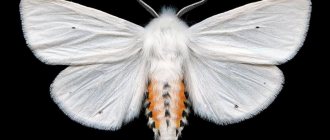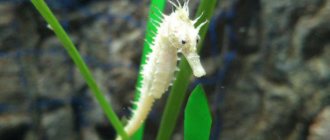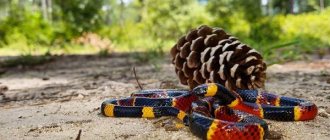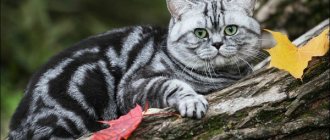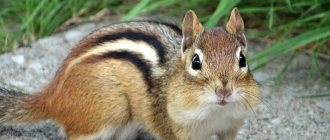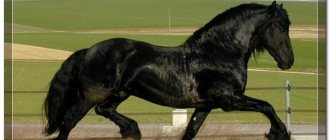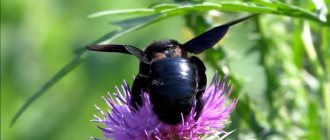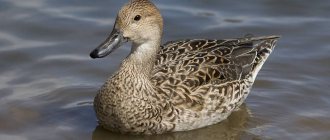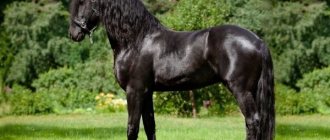The scientific name of the death's head butterfly is Acherontia atropos. A diurnal butterfly of the hawk moth family (the largest hawk moth in Europe). It got its name for the yellow pattern in the form of a skull and crossbones on a dark brown back. The body length is about 6 cm, and the wingspan is up to 13 cm. The butterfly is considered the heaviest on earth - its weight reaches 9 grams.
The hawkmoth caterpillar is up to 15 cm long and has a curved horn. There are different colors: yellow-blue, green, brown.
The death's head usually feeds on nightshade plants (potatoes, nightshade, belladonna, dope, tobacco), and sometimes others: jasmine, raspberries, lilacs.
The Death's Head butterfly can be found in apiaries, where it sucks honey, above warm valleys and low mountains. It is interesting because when irritated it makes a high-pitched squeaking sound. The frightening coloring and strange sounds that the moth makes have given rise to incredible rumors.
The death's head is a butterfly with a wingspan of up to 13 cm, which belongs to the order of hawk moths. Another name for the butterfly is also known - Adam's head. This insect is the largest in Russia. In Europe, it is the second largest in size - the lead in body size is Saturnia pear. The death's head hawk moth is easily recognizable due to its characteristic color - on the body of the insect there is a bizarre pattern that vaguely resembles a human skull. For this feature the butterfly received its Russian name. Most European peoples gave it similar names. Its eerie appearance has made this insect a popular character in horror books and films.
Description of the species
The death's head moth was first described in the scientific literature in the work Systema naturæ by Carl Linnaeus. In his work the insect is referred to as "Sphinx atropos". In 1809, the German entomologist Jacob Heinrich Laspeyres transferred the hawkmoth of this species to the genus Acherontia (this is a reference to the Acheron River, located in the kingdom of Hades), to which the butterfly is still classified today.
The front wings can be from 40 to 50 mm, but cases have also been recorded when their size reached 70 mm. The size of the wings varies between males and females. For the former it ranges from 90 to 115 mm, for the latter – from 100 to 130 mm. The front wings have a smooth outer edge. They are much longer than wide - the difference can be 2 times or more. The rear wings have slightly different proportions compared to the front ones - they are 1.5 times longer, and a strong bevel towards the rear edge is noticeable.
The weight of individuals can be from 2 to 8 g, with females being heavier than males. The color of the insect's head is most often black. On the chest of the butterfly you can see a frightening yellow pattern that looks like a human skull. However, some species lack this feature - for example, Acherontia atropos f. Obsoleta.
The coloring of males and females differs. In males, most of the abdomen is colored ocher-yellow; the color also includes gray-blue or black. In females, only the last segment has this coloration. The hawk moth of this species has an impressive abdomen, covered with scales, the length of which can be up to 60 mm with a diameter of up to 22 mm. There is no brush of scales at the end. The abdomen varies in shape - in males it is slightly pointed, and in females it is rounded.
The insect's eyes are round. The proboscis is short – from 10 to 14.5 mm. The palpi are well developed, slightly curled upward. The outside is covered with scales. The short antennae bend slightly before the apex. The legs are strong and short.
The death's head usually rests during the day, choosing tree trunks and stumps to remain invisible to others, and is awake at night. Butterflies can be seen at night in the light of lanterns and lamps.
In case of danger, insects first try to scare the enemy - they flap their wings loudly, make unusual sounds, and then try to hide as quickly as possible, choosing secluded places for this. Disturbed butterflies prefer to hide in crevices in the bark or under leaves. In case of danger, males can release a special substance from the glands to scare away opponents, the smell of which vaguely resembles the smell of mushrooms.
There are three types of butterflies, the name of each of which is associated with ancient myths:
- Atropos was the name of the Greek goddess of fate, who cut the threads of lives;
- Styx – river of the dead;
- Lachesis is the goddess of fate who measures the duration of life.
general information
Hawkmoths are amazing insects: outwardly, adult individuals resemble hummingbirds. Some species of nocturnal butterfly fly only during the day, others are active at night or in the morning. When an unusual creature with an original body and wing color appears in a garden or vegetable garden, many owners do not understand what type of butterfly it is.
Characteristics:
- the size of adult insects is up to 110 mm, the proboscis is up to 100 mm long, the wingspan is from 65 to 120 mm;
- the flight speed is impressive - up to 50 km/h;
- hummingbird butterflies hover over flowers, flutter, quickly flap their wings, and feed on sweet nectar;
- the complete cycle of transformation is characteristic of unusual creatures. First, the egg appears, then the larva (caterpillar), then the pupa and finally the adult (butterfly). The life cycle takes from 30 to 45 days; during the summer period, two generations of amazing creatures often alternate;
- The emergence of adult insects begins at the end of June. Bright creatures look spectacular against the backdrop of young greenery. Butterflies flutter around flowering trees and shrubs: pear, apple, chestnut, lilac;
- The caterpillars are large - up to 125 mm, most species have a bright color, and the original pattern on the back and sides is often noticeable. Some species are painted in fantastic colors: green with a lemon tint, white with black and yellow spots on the sides, brownish-gray with “painted” eyes on the front of the body. Growing individuals look like creatures from another planet;
- A characteristic feature of caterpillars is a “horn” at the end. The color of the formation depends on the type of butterfly, for example, in the lilac hawkmoth it is black on one side and yellow on the other, in the ocellated variety it is blue;
- Before pupation, the color of the growing insect changes. During this period of development, the caterpillar accumulates enough nutrients and then burrows into the ground. After 18 days, a beautiful butterfly emerges from the pupa. While the wings dry, the insect sits in place, as soon as it can fly, the hummingbird butterfly goes to look for a sexual partner to maintain the population;
A few more facts:
- A caterpillar is a creature that is soft to the touch, calm, and crawls quite slowly. If you take it in your hands, no unpleasant sensations or disgust appear. The growing individual sits calmly on the palm, moves slowly, and willingly “poses” for the camera.
- caterpillars feed on young leaves. The wine hawk moth eats greenery and settles on the grapevine. The larva is large, warlike in color, and has a kind of spike at the end. The creature is so unusual that many owners do not destroy the pests, but watch them, hoping to endure the unpleasant period and later see a beautiful hummingbird butterfly on the site;
- The tongue hawk moth resembles a small bird. When a beautiful creature appears at their summer cottage, many children say that they saw an unusual bird next to the flowers;
- The Death's Head Hawkmoth gets its name from its distinctive skull-like pattern on its chest, like the emblem on a pirate flag. The largest butterfly of the hawkmoth species feeds on the sap of young trees and honey. The insect often climbs straight into the hive, makes sounds reminiscent of a young queen, and steals honey without hindrance: the bees take her for a relative and do not touch her;
- the bedstraw species is most often found in the middle zone. Long proboscis, dense body, color - a combination of brown and beige, with orange areas visible on the tips of the wings.
Unusual insects are often called sphinxes. The reason is that the disturbed caterpillar raises its front part, takes on a threatening appearance, and freezes in the pose of a sphinx. Hence the name.
Types of hawk moths:
- euphorbia;
- wine;
- pine;
- hawkmoth "death's head";
- ocular;
- oleander;
- bindweed;
- lilac;
- proboscis hawk moth and others.
On a note!
There are about 1,000 species of “northern hummingbirds” on the planet. Some species make long-distance flights, migrate from one end of the country to another, or cover distances between continents.
Singing butterfly
One of the features of this species of butterfly is the ability to make unusual sounds. Not only the butterfly is endowed with this skill. Both the pupa and the caterpillar can “sing,” and at different stages of development the insect’s voice differs significantly.
Scientists have been interested in this feature since ancient times. So back in the 18th century, the Dutchman Jan Swammerdam tried to understand how a butterfly makes sounds, but could not find the answer. In the 19th century, research was carried out by the Frenchman Reaumur, but luck did not smile on him either. The riddle was solved only in 1920. It's all about the special structure of the insect's pharynx - when air is drawn in, its pharynx works like bellows. The thin film in the crop begins to vibrate and an unusual sound appears.
In 2006 and 2007, tourists vacationing in Mexico, where there were many butterflies of this species, were amazed by the collective singing of insects.
LIFE CYCLE
The death's head butterfly mates in the spring. The female lays green, oval eggs on top of potato and other nightshade leaves. Caterpillars living in Europe are bright yellow or green with noticeable purple diagonal stripes on both sides of the body. The caterpillar's defenses include not only an amazing chirping sound, but also the release of a very toxic substance. The caterpillar has a sharp projection on its abdomen to scare away hungry birds.
Caterpillars are very voracious, so they soon reach a considerable length. Having reached the required size, the caterpillar burrows into the ground, where it forms a cocoon. The death's head pupa overwinters, and in the spring a butterfly emerges from it. Individuals heading south soon prepare for a long flight. The death's head hawk moth is a thermophilic species, therefore it prefers valleys at low altitudes above sea level and warm places in mountains of medium altitude.
Habitat of Acherontia atropos
The dead head insect can be found in Africa, Saudi Arabia, Iraq, Iran and other countries. It is widespread in the subtropical and tropical zones. In addition, the butterfly is found in Central and Southern Europe. In Crimea, seeing a death’s head is a real success, because it is practically not common there. On the territory of Russia, this species was seen only in some areas - for example, in the Moscow, Kaluga and Krasnodar regions. The butterfly can also be found in Armenia, Azerbaijan and Abkhazia.
Hawkmoths annually fly north, where they form temporary colonies. The distances that butterflies travel vary depending on weather conditions. In some years, the insects even reach Iceland.
In the mid-19th century, there were so many hawkmoths of this species in England that farmers decided to use the insects to feed poultry.
In Africa, where conditions are most suitable for hawk moths, the butterfly can be seen all year round. Butterflies move very quickly, their speed can be up to 50 km per hour. They prefer to settle in sunny areas located in lowlands overgrown with grass and shrubs. You can see a dead head in deciduous forests, but in mountainous areas they are rare guests and are listed in the Red Book.
Corpuscle
Moths have a thick body that protrudes slightly beyond the wings. Most often, the abdomen of moths grows with a mass of hairs, which in the lower part of the body become tangled and even braided.
The body has a lot of powerful muscles that help the insect fly quickly: by the way, hawk moths are the fastest butterflies in the world.
A species of butterfly such as the northern hummingbird can not only quickly cover long distances, but also move backwards, right and left.
Peculiarities
The hawk moth is distinguished by a thick proboscis, due to which the insect cannot consume flower nectar. Therefore, we have to be content with tree and fruit juice. Many species of hawk moths are compared to hummingbirds because of their peculiarity - the insect seems to hover over a bud when drinking nectar, quickly moving its wings. However, the death's head butterfly does not have such a feature - Acherontia atropos prefers to sit down before having a snack.
One of the insect's favorite treats is honey. The death butterfly may enter the hive or try to trick the bees and then puncture the honeycombs and have a snack. The portion that she eats at a time ranges from 5 to 15 g. There is a theory that the sounds made by the cunning insect are very reminiscent of bees. This belief is widespread among beekeepers who watch butterflies with interest, but scientific evidence for this curious fact has not yet been found.
It is believed that the black hawk moth secretes certain chemicals to mask its scent. If an attack in the hive cannot be avoided, the death's head can withstand up to five bee stings. Beekeepers do not sound the alarm - the butterfly does not interfere with beekeeping due to its small number. For prevention, special nets are installed around the hives, through which bees can easily penetrate, but butterflies cannot, because the diameter of the cells is about 8 mm.
If danger suddenly arises, the insect emits a sharp and shrill squeak. The caterpillar also makes sounds as a result of friction with its jaws. It's surprising that the doll does not remain silent. It has not yet been possible to find out how and for what purpose it makes sounds, but most scientists agree that this is done to intimidate enemies.
Poisonous caterpillars
There are not many representatives of horned caterpillars in our country, probably due to the harsh and cold climate, but on other continents, where it is warm almost all year round, there are plenty of such beauties. By the way, there is an opinion regarding the colors of insects that the brighter the color of the caterpillar, the more beautiful the butterfly will hatch from it. And also, if the larva is too beautiful, then you should definitely be wary of it. The striking color warns of the poisonous nature of the insect. At the very beginning of the conversation about foreign caterpillars with a horn on their tail, photos of which can be seen in the presented material, I would like to discuss the poisonous species.
The appearance of offspring
The second generation of female death's heads are sterile, so the population can only grow due to a new wave of migrating butterflies. Every year two insect offspring are born. In warm years, sometimes three generations are hatched, and in cold years, not all caterpillars have time to pupate. In this case, the insects die due to unfavorable conditions.
First, females attract the attention of males with the help of pheromones, then the insects mate. Females lay up to 150 eggs at a time under the leaves of food plants. The egg of this insect is oval in shape and can be blue or light green. A moth with a skull does not appear immediately - first gardeners see large caterpillars with five pairs of legs. Their length is about 12 mm. By the fifth instar, this figure changes significantly - the caterpillars reach up to 15 cm, their weight can be from 18 to 22 g.
The color of the caterpillars varies. There are yellow-blue, brown and green individuals. The most common are lemon yellow, on the body of which you can see blue stripes converging on the back at an acute angle. During the eight weeks that the insect is in the caterpillar stage, it spends most of it underground (usually at a depth of 40 cm). Usually the larva partially protrudes from the shelter to reach the nearest greenery, snack on tobacco, eggplant or tomato, and then hide underground again.
The male pupa is from 50 to 65 mm, the female is from 65 to 75 mm. The maximum size of the pupa is 80 mm. Weight can range from 7 to 12 g. The color after pupation is initially yellow or cream, after 12 hours it changes to red-brown.
Hawkmoth oleander
Description
A very large moth. The length of the front wing is 45–52 mm, the wingspan is 90–125 mm. Sexual dimorphism is weakly expressed. The front wings have a characteristic “marble” pattern of gradient spots and bands of various shades of green, pink, lilac, gray, and white. The hind wings are pinkish-gray, with a thin wavy white band and a grayish-green outer field.
The head, chest, and abdomen are grayish-green, the tegulae are rich green. The antennae are whitish. The caterpillar is very large (up to 11 cm in length), bright green (the dorsal side is yellowish-whitish), with a yellowish short (caudally rounded) horn and dark red thoracic legs. On the sides from the horn to the second abdominal segment there is a wide bluish-white stripe, contrasting dorsally and blurred ventrally.
Above and below it are large pearly white dots, forming dorsal semirings on the 2nd–5th segments. On the sides of the third thoracic segment there are blue ocellated spots, centered in white and edged with blackish-red. The pupa is up to 65 mm long, reddish-brown, translucent in the thoracic region. The spiracles, cremaster and double median line between the wing primordia are blackish. On the abdominal segments there are numerous small blackish dots.
Spreading
The global range is multiregional, covering Africa, Western India, Sri Lanka, and the Mediterranean region of the Palaearctic. Widely distributed in the tropical and subtropical zones of the Old World, an active migrant. Known from France, Romania, Moldova, Crimea. Butterflies flew to Finland and Siberia.
Regularly met in the RO in the 19th century. In the Caucasus there are references from Dagestan, Abkhazia, and Adjara. The territory of the Krasnodar Territory belongs to the reproductive part of the global range. The regional population is regularly replenished by migrants. Geographically, it is confined to the coastal regions of Greater Sochi; modern finds from the northern macroslope are unknown.
Features of biology and ecology
Polyphage, polyvoltine migrant. In the region it is found only in urbanized landscapes of the Black Sea coast. At the turn of the 19th – 20th centuries. regularly appeared in the Ciscaucasia and the Lower Don, where they left their offspring on oleander bushes exposed for the summer. Caterpillars are able to develop on periwinkle, oleander, and occasionally on grapes, martin, mock orange, and privet.
In Abkhazia, the first flying butterflies appear at the end of May. Until December, the 3rd and 4th generations have time to develop. In Sochi, hawk moth is associated with oleander plantings on busy city streets, in parks, squares, alleys, gardens of holiday homes, and sanatoriums. The caterpillars feed around the clock, preferring the foliage and flowers of the upper young shoots. In the region, caterpillars of 2–3 generations can be traced; they are most numerous in August.
In the first instars, the disturbed larvae freeze, stretching their head and legs forward, probably imitating the lanceolate leaf of an oleander. They pupate in leaf litter under the bushes of the food plant. In the laboratory, caterpillars used rare (and fragile) brownish silks to form cradles in the humus near the soil surface. The small depth of pupae is one of the reasons for their high mortality, both from low temperatures and from destruction by predators.
Thus, blackbirds easily detect and peck the pupae of the oleander hawk moth. The high density of this bird species wintering in Sochi leads to mass death of pupae even in mild winters. In laboratory conditions close to natural conditions, the development of second generation pupae (August) occurs in 15–17 days. We did not record the flight, however, judging by the timing of caterpillar development, its peak in Sochi should fall in mid-August - the first ten days of September. Meetings of butterflies at the end of August are known for the Crimea. The development of larvae of subsequent generations is hampered by cold weather.
Death's Head Enemies
The butterfly has many enemies in nature. At any stage of the life cycle, it can suffer from parasitoids - those that survive with the help of the host. Some insects are able to lay eggs directly on the caterpillar. Tahini eggs are sometimes eaten by caterpillars along with the leaves. In this case, the parasites develop internally - they eat the internal organs and then leave the insect's body.
Butterfly with a skull on its back in culture
The unusual and frightening coloring has given rise to numerous superstitions. In different countries, the death's head moth is a harbinger of serious troubles; its appearance has even been associated with epidemics.
It is enough to search for “dead head moth photo” or “dead head photo” to understand why this type of butterfly has and continues to terrify superstitious people. In the photo, a creepy insect with a memorable coloring has become popular among writers and screenwriters; you can see it or read about it in the following films and books :
- – film “The Silence of the Lambs” (directed by Jonathan Demme);
- – film “The Box of Damnation” (director – Ul Bornedal);
- – story “The Sphinx” (author – Edgar Allan Poe);
- – story “The Dead Head” (author – Alexander Belyaev);
- – novel “I am the King of the Castle” (author – Susan Hill).
In Russia, it used to be believed that if you saw a butterfly with a skull on its wings, you should definitely kill it in order to avoid misfortunes and losses. There are also other interesting facts and myths:
Superstitious residents of England believed that the death's head butterfly was friends with sorcerers and witches and whispered to them the names of people who would soon die. Some African tribes still believe that the bite of this butterfly can be fatal. In European countries, it is considered a bad sign if a butterfly accidentally flies into the house - this can portend serious illnesses, losses and other troubles for the owners.
A strange story was recorded by the author of the book The Antiquary - residents of Lincolnshire convinced the writer that the caterpillar of an unusual butterfly could easily transform into a mole. In some countries, it is believed that if a hawkmoth scale accidentally gets into the eye, you can even lose your eyesight.
Butterfly guard
The Red Book contains information about this butterfly. Single individuals are usually found, but the population size does not remain constant every year and is influenced by weather conditions. The warmer the year, the more butterflies there are. In cold years, on the contrary, there are significantly fewer insects of this species.
The number is judged by the discovered pupae. In the USSR, the death's head hawk moth suffered from chemicals that were used to treat fields to combat various pests. In order to grow potatoes due to the invasion of the Colorado potato beetle, large areas had to use insecticides. The probability of survival of the offspring of the death's head butterfly of the first wave after such control measures is minimal.
Sources[ | code]
- ↑ JJ de Freina.
Die Bombyces und Sphinges der Westpalaearktis. Noctuoidea, Sphingoidea, Geometoidea, Bombycoidea Auflage. - München: EFW Edition Forschung & Wissenschaft Verlag GmbH, 1987. - Vol. 1. — 405 p. — ISBN 3-926285-00-1. - Lampert K. Atlas of butterflies and caterpillars. - Minsk: Harvest, 2003. - 735 p. — 5000 copies. — ISBN 985-13-1664-4
- Striganova B. R., Zakharov A. A.
Five-language dictionary of animal names: Insects (Latin-Russian-English-German-French) / . - M.: RUSSO, 2000. - 560 p. — 1060 copies. — ISBN 5-88721-162-8. - Nidon K., Peterman I., Scheffel P., Shayba B. Plants and animals. A Naturalist's Guide. – M.: Mir, 1991. – 263 p.
- Brandt E.K.
Hawk Moth Death’s Head // Encyclopedic Dictionary of Brockhaus and Efron: in 86 volumes (82 volumes and 4 additional). - St. Petersburg, 1890-1907. - ↑ K. Lampert.
Atlas of butterflies and caterpillars. - Minsk: Harvest, 2003. - 735 p. — 5000 copies. — ISBN 985-13-1664-4. - Helgard Reichholf-Rim.
Butterflies. The most popular reference book. - M.: Astrel, 2002. - ↑ Ler P.A.
Key to insects of the Russian Far East. T. 5. Caddisflies and Lepidoptera. Part 3. - 2001. - Izersky V.V.
Bombicoid lepidoptera and corydalis of Siberia and the Far East. - Kyiv, 1999. - ↑ N. A. Kun.
Myths of Ancient Greece. - M.: AST, Astrel, 2004. - 400 p. — 10,000 copies. — ISBN 5-17-025345-1. - ↑ Kaabak L.V., Sochivko A.V.
Butterflies of the world. - M.: Avanta+, 2003. - ISBN 5-94623-008-5. - Fauna Europaea, Version 1.3, 04/19/2007.
. Retrieved November 5, 2009. - ↑ Ian J. Kitching: Phylogeny of the death's head hawkmoth, Acherontia, and related genera (Lepidoptera: Sphingidae, Acherontiini)
, Systematic Entomology 28 (2003) 71–88. - ↑ Helgard Reichholf-Rome.
Butterflies. The most popular reference book. - M.: Astrel, 2002. - ↑
- Rolf Reinhardt, Kurt Harz: Wandernde Schwärmerarten. Totenkopf-, Winden-, Oleander- und Linienschwärmer. In: Die Neue Brehm-Bücherei Bd. 596. 2., unveränderte Auflage. Westarp Wissenschaften, Magdeburg, Heidelberg, Berlin und Oxford 1996, ISBN 3-89432-859-2, S. 32.
- Pittaway, AR. 1993. The hawkmoths of the western Palaearctic. Harley Books, London.
- Dubatolov VV, Titov SV 2011. Discovery of Acherontia atropos
L. (Lepidoptera, Sphingidae) in North-East Kazakhstan // Amurian zoological journal. Vol. III. No. 1. P. 58—59, color plate V. - Sitnikov, 2009; cit. from: Dubatolov, Titov, 2011.
- ↑
- Akimushkin I. I.
Animal world. - M.: Mysl, 1993. - T. 3. - ISBN 5-244-00444-1. - ↑
- (August 15, 2003). Retrieved November 14, 2009.
- (August 15, 2003). Retrieved November 14, 2009.
- ↑ Efetov K. A., Budashkin Yu. I.
Butterflies of the Crimea (Higher Lepidoptera). - Simferopol: Tavria, 1990. - 112 p. — (Environmental protection). - Rolf Reinhardt, Kurt Harz: Wandernde Schwärmerarten.
Totenkopf-, Winden-, Oleander- und Linienschwärmer. Die Neue Brehm-Bücherei Bd. 596, Westarp & Spektrum, Magdeburg, Heidelberg, Berlin und Oxford 1996, ISBN 3-89432-859-2. - ↑ N. B. Nikitsky, A. V. Sviridov.
Insects of the Red Book of the USSR. - M.: Pedagogy, 1987. - P. 176. - Shaparenko O. Yu., Shaparenko S. O.
Chervona book of Ukraine. — 2nd ed., with changes. - Kharkov: Torsing Plus, 2007. - 384 p. — 3000 copies. — ISBN 978-966-404-597-8. - Vladimir Alekseev.
Butterflies in myths and legends. - Bustard, 2006. - 192 p. - (Historical album). — ISBN 5-358-00249-9. - Harrison, R: . Van Gogh Letters
. WebExhibits (funded in part by US Department of Education, Fund for the Improvement of Postsecondary Education) (2011). Retrieved April 18, 2011. - . Permanent Collection
. Van Gogh Museum (2005—2011). Retrieved April 15, 2011.

